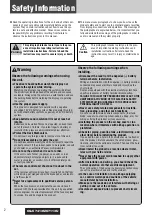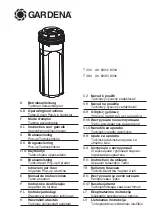
Space Vehicle Configuration
Satellite Navigation
68
User Manual 1178.6379.02 ─ 01
.........................................................................................70
...............................................................................................70
Copy Modulation Control Settings to,SV-ID
.................................................................. 70
SV signal configuration table
Table with one or more rows, one row per enabled signal ("Simulation Configuration >
Systems&Signals" >
).
Signal State ← SV signal configuration table
Activates the selected signal.
The available signals depend on GNSS system and the configuration in the
At least on signal has to be activated per satellite. Activate another signal to deactivate
a particular signal, if it is the only one active at that moment.
Remote command:
[:SOURce<hw>]:BB:GNSS:SVID<ch>:GPS:SIGNal:L1Band:CA[:STATe]
[:SOURce<hw>]:BB:GNSS:SVID<ch>:GPS:SIGNal:L1Band:P[:STATe]
on page 267
(etc. for the other GNSS systems)
Signal Component ← SV signal configuration table
Indicates the signal content (data only or data and pilot).
The information is retrieved automatically from the selected simulation data source file.
Signal components depend on the signal, the frequency band and the GNSS system.
Remote command:
n.a.
Primary Code ← SV signal configuration table
Defines if the primary code is used to spread the data and pilot components.
If your interference tests require the generation of a continuous wave signal send on
the same frequency as a specific SV, set "Primary Code > Off" and "Nav Msg Control >
Off".
Remote command:
[:SOURce<hw>]:BB:GNSS:SVID<ch>:GPS:SIGNal:L1Band:CA:PILot:
PCODe[:STATe]
[:SOURce<hw>]:BB:GNSS:SVID<ch>:GPS:SIGNal:L1Band:P:PILot:PCODe[:
STATe]
(etc. for the other GNSS systems)
Seconadry Code ← SV signal configuration table
Enables the secondary code in the pilot channel of Galileo, or in the D1 navigation
message for BeiDou.
Modulation Control Settings
















































